The festival season in India means bright colours, lights, giant floats, ceremonies and excitement. The major Indian celebration is Durga Puja (Puja meaning worship). The Hindu Goddess Durga is the goddess of Shakti (power). Magic may be the only word that best describes the pageantry and fanfare that revolves around Durga Puja.
While going through some old pictures yesterday, I came across the photographs of our stay in Varanasi during Durga Puja. Durga puja is just a few weeks from now in this year. The photographs took me down the memory lane. Though Kolkata is, without doubt, the most vibrant destination to catch the authentic festivities, we decided to visit Varanasi for a change in 2008. There are reasons too.
Our Guruji used to perform Durga Puja in Varanasi and he had been inviting us for several years. My in-laws are in Prayagraj, around 120 km from Varanasi. They have been inviting us to be with them on one Vijaya Dashami, at least. So, we decided: let’s go to Varanasi during Durga Puja and to Prayagraj for Vijaya Dashami.
The spiritual capital of the country, Varanasi, also known as Benaras or Kashi, is a city on the banks of the holy river Ganga (Ganges). It is the holiest of the Sapta Puri, or seven sacred cities, of both Hinduism and Jainism, and it also played a pivotal role in the development of Buddhism.
Bengali Tola’s by-lanes and the ghats are packed with Bengalis who leave no stone unturned in celebrating Durga Puja in style. Durga Puja is famous for its beautiful pandals. Every year, puja organisers come up with myriad themes to surprise and delight visitors with creative concepts and ideas. A rickshaw ride around the old city, near Godowliya Chowk or a visit to the Durga temple, is all one needs to experience the festivities.
It’s difficult to get a decent hotel room booked in Varanasi during Durga Puja days unless booked fairly in advance. We booked our stay at the Taj Ganges Hotel. It’s situated on the lawns of the Nadesar Palace on the bank of the river Varuna. The Nadesar Palace lies nestled in the heart of vibrant Varanasi among mango orchards, marigolds and jasmine fields. Built by the East India Company and acquired by Maharaja Prabhu Narain Singh in the 19th century, the property is named after the goddess Nadesari, whose shrine is located in front of the palace.
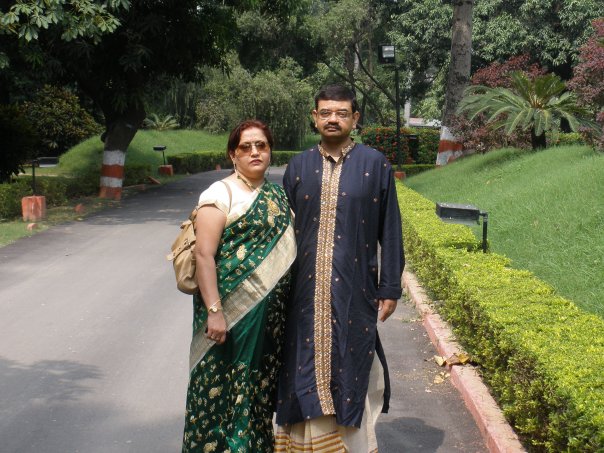
We used to get ready and leave the hotel in the morning and reach the puja mandap (a mandap is a temporary platform set up for weddings and religious ceremonies). The streets are narrow in Varanasi, one of the oldest surviving cities in the world. The streets and lanes generally remain crowded in Varanasi around the year. During this Durga Puja time, the situation gets worse. There are many traffic restrictions with bamboo railings for crowd and traffic management. We used to travel apart in auto-rickshaws and rest on foot to reach the place.
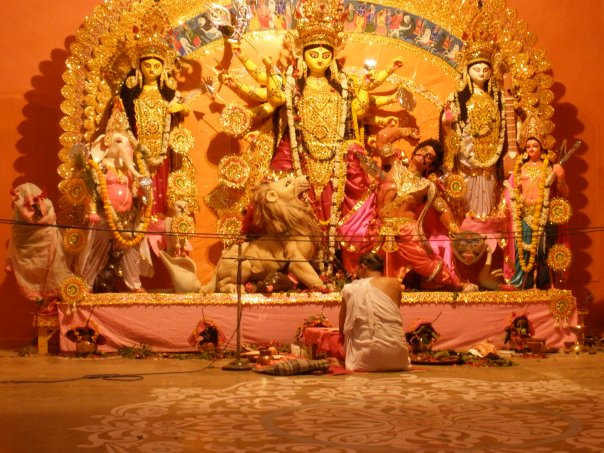
We used to stay the whole day there, watching the puja, savouring the Prasad and bhog, the food that is blessed by Maa Durga, which the organisers used to get us at the special room of our Guruji at the Haveli. The main item on the bhog platter is the khichudi or khichdi. This typical Bengali khichdi (khichudi) is very different from the ones prepared in any other part of India. Not only does it have regular rice and dal, but also a few additions like spices, peas, potatoes, and tomatoes. Sometimes, even cauliflowers are added. In the evening, we used to return to our hotel after watching the Sandhya Aarti.

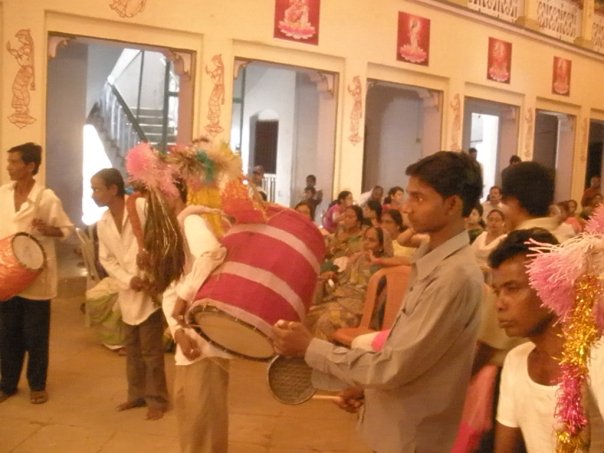
On the day of Maha Ashtami, I also performed the Kumari Puja along with our Guruji. Kumari Puja (a.k.a. Kanya Pujan) is an essential part of Durga puja, during which a young unmarried pre-teenage girl is worshipped symbolically as a goddess. Kumari puja is held at the end of Mahastami puja. The same rituals are performed to worship the Kumari (young unmarried girl) and the same offerings are made to her as those during the worship of Goddess Durga. She is purified and sanctified through the chanting of holy mantras.

According to Hindu scriptures, Kumari puja commemorates the killing of Kolasur by the goddess Kali. According to legend, Kolasur had once occupied the heavens and the earth. The helpless deities approached Mahakali for help. Responding to their appeal, she was born again and, in the form of a maiden, killed Kolasur.

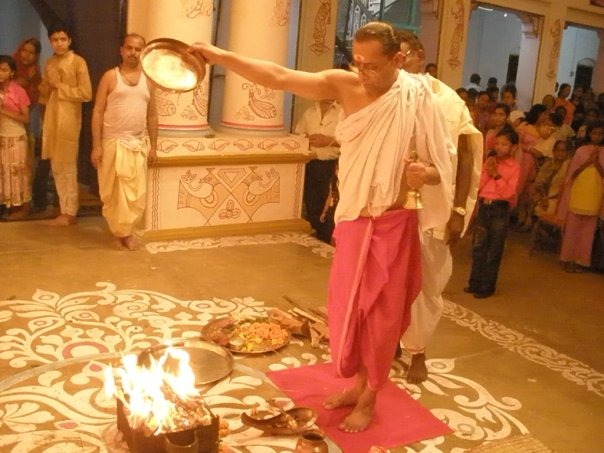
The homa was performed on the afternoon of Mahanavami. After the homa, we took the blessings of our Guruji and returned to our hotel.
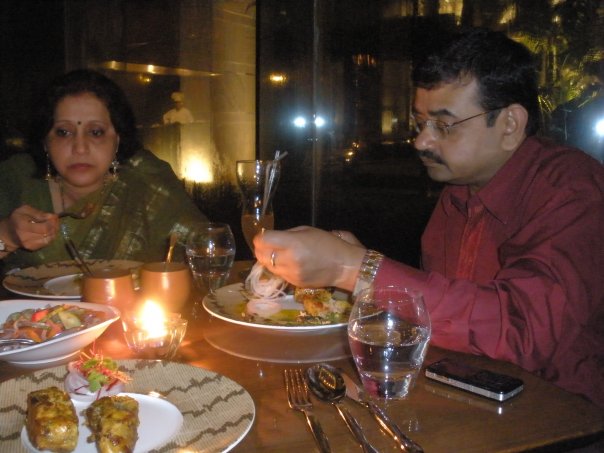
In the night, we left for Prayagraj after having a candlelight dinner at the hotel.


What happened on the Dashami day at Prayagraj. You should add that too.
To my understanding, for Kumari Puja, the girl should be of pre-menstruating age or below 10 years. In North India, on Ashtami day of Navratra, young girls of pre-teen years are treated with food (Puri+Kala Chana+ Halwa) and a token money as Daan.
LikeLiked by 1 person
The story is of Varanasi… so it’s restricted to Varanasi. 🙂
Yes, for Kumari puja pre-puberty girls are preferred choice.
LikeLike
I had no idea of this connection of Bengalis with Varanasi. Thanks for taking us through old pictures and memory lane.
LikeLiked by 1 person
Bengalis have been going to Kashi since long. Many Bengali zamindars used to have their houses their for pilgrimage purpose. Then after British, they moved to UP and Bihar as doctors, professors etc. I heard that Durga Puja was first started in Varanasi in 1770’s by a Bengali zamindar. It’s estimated that over 80,000 Bengalis are residents of Varanasi. Even there was a Bengali MLA from Varanasi, who was elected for 7-times.
Thanks Arvind for your like and tweet.
LikeLiked by 1 person
Nice write up! You guys look great in a traditional dress.
LikeLiked by 1 person
Wonderful post, full of power and love. Do find time to read mine on Durga here https://sunniesmybunnies.wordpress.com/2019/10/01/who-is-durga/
LikeLiked by 1 person
Thanks. Will read it.
LikeLiked by 1 person